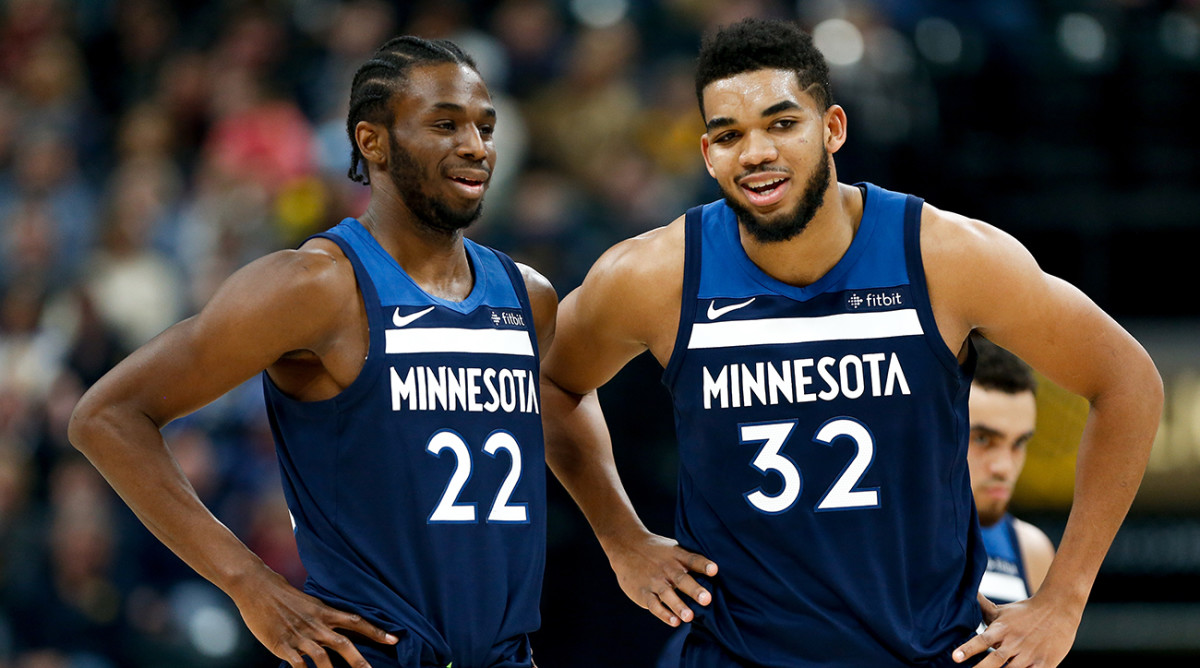Will Andrew Wiggins Ever Become the Player the Wolves Need Him to Be?

Andrew Wiggins’s performance in Minnesota’s 119-117 win over against the Thunder on Jan. 8 provided every reason to buy stock in the former No. 1 overall pick. The fifth-year swingman poured in 40 points and 10 rebounds at Chesapeake Energy Arena in Oklahoma City, attempting 18 free throws in the victory. Wiggins was a force to be reckoned with from the opening tip. He bruised his way to the tin and made decisive moves off the bounce. His defensive energy bumped up from middling to menacing, setting the tone against a physical Thunder team.
The effort was impressive, albeit far too rare as Wiggins enters the first season of his five-year, $148 million extension with the Timberwolves. Wiggins’s talent isn’t in question. The Toronto native cruised to the top pick in 2014 despite falling in the second round of the NCAA tournament with Kansas in 2014, entering the league with the moniker “Maple Jordan”. But performances like last week’s eruption in Oklahoma City are largely exception, not the norm. And at a hefty $148 million, Wiggins’s shortcomings are a glaring issue for a middling roster. Now in year five, Wiggins is at a crossroads. Can he evolve into a suitable star and complement Karl-Anthony Towns, or will he become one of the league’s greatest albatrosses?
MAHONEY: Capela's Injury Puts More Pressure on Harden to Carry Rockets
Wiggins’s third season provided a window into his All-Star potential. He jumped to 23.6 points per game, making 1.3 threes per game with a career-best 107 offensive rating. The jump shot was a work in progress, but it was treated as a secondary weapon paired with his ruthless drives to the rim. Wiggins is an elite leaper and strong, too, difficult to bump off his spot inside the foul line. He has mirrored Kawhi Leonard at times inside 10 feet, burying his shoulder to create space before rising up to flick in a short jumper. The outline of a strong offensive force was there.
So what’s happened since Wiggins’s breakout campaign in 2016-17? The regression has been significant. The former Jayhawk is down to 17.9 points per game in 2018-19, 39th of 47 players with a usage rate of 24% or more. Wiggins is a high-volume, pedestrian scorer, littered with inefficiencies.

It’s hard to find where on the floor Wiggins actually excels. His field goal percentage on shots at the rim ranks 65th out of the 75 players with at least 250 drives. Of the 41 players with at least 200 pull-up attempts, Wiggins sits at 40th in field goal percentage and 31st in three-point percentage. He’s 53rd in effective field goal percentage out of the 59 players with a usage rate over 24%. Wiggins isn’t a creator, either. He’s 50th in assist rate among the 59 players noted above. By nearly every metric, Wiggins is below average compared to those who earn a similar share of opportunities.
Despite the staggering statistics, it takes a discernable level of talent to earn such a large share of the offense. And it would be unfair to dismiss Wiggins as a lost cause. It wasn’t regarded as a disaster when he was given nearly $150 million in October 2017. With Towns in tow, latching onto Wiggins as a foundational wing seemed like a natural fit. Yet, as the Timberwolves sit under .500 in 2018-19 after a first-round exit last year, the questions about Wiggins’s long-term viability will fester.
The tape matches the metrics in Wiggins’s subpar season. Ideally he’d thrive off the gravity demanded by Towns. The big center can hold court at the foul line or on the block, leaving Wiggins free to wreak havoc as a cutter and slasher. But Wiggins disappears as Towns operates in crunch time. He’s often stationed in the corner as little more than a perimeter outlet, watching the ball as Minnesota’s true headliner goes to work. The Wolves operate as a medley of one-man bands. Towns will eat up the shot clock for a couple possessions, then cede an opportunity to Wiggins or Derrick Rose. All three are talented, but the offense is lesser than the sum of its parts. Much of the blame could go to the recently fired Tom Thibodeau, though Minnesota’s top scorers shouldn’t be absolved.
SHARP: Thibodeau Is Gone, But Wolves Have Bigger Problems
The stereotypes about Wiggins’s offensive game are unfortunately true. The decried 18-footers show up more often than they should. He doesn’t attack the rim with fervor for four quarters, let alone two. Wiggins has no problem dribbling 20 seconds off the shot clock, nor does he take issue with jacking a jumper in the first five seconds of a possession. Perhaps interim head coach Ryan Saunders coaxes the best out of Wiggins. It would be a significant turnaround.
Wiggins’s flaws would be manageable as a rotational wing, or even as a player south of a nine-figure contract. But Minnesota won’t stay afloat with this version of Wiggins. His $148 million deal is a mammoth price tag for a non-All-Star, the kind of mistake that lands front office members in a new line of work. Wiggins is in the class of high-priced liabilities, players whose prior production and prestige gave way to contracts now seen as eyesores. The Wizards will struggle to deal John Wall. The Clippers were quick to find a taker for Blake Griffin. Would a middling squad with cap space take on Wiggins? Minnesota could be hard-pressed for a suitor.
Those trade conversations will be on hold for at least the rest of 2018-19. Wiggins is young and with a new coach, previously showing All-Star ability. He very well could find his groove alongside Towns down the stretch, driving Minnesota to a second-straight playoff appearance for the first time since 2003-04. Though as it presently stands, Wiggins is an expensive disappointment in need of a reboot to flip a career on the wrong track.
